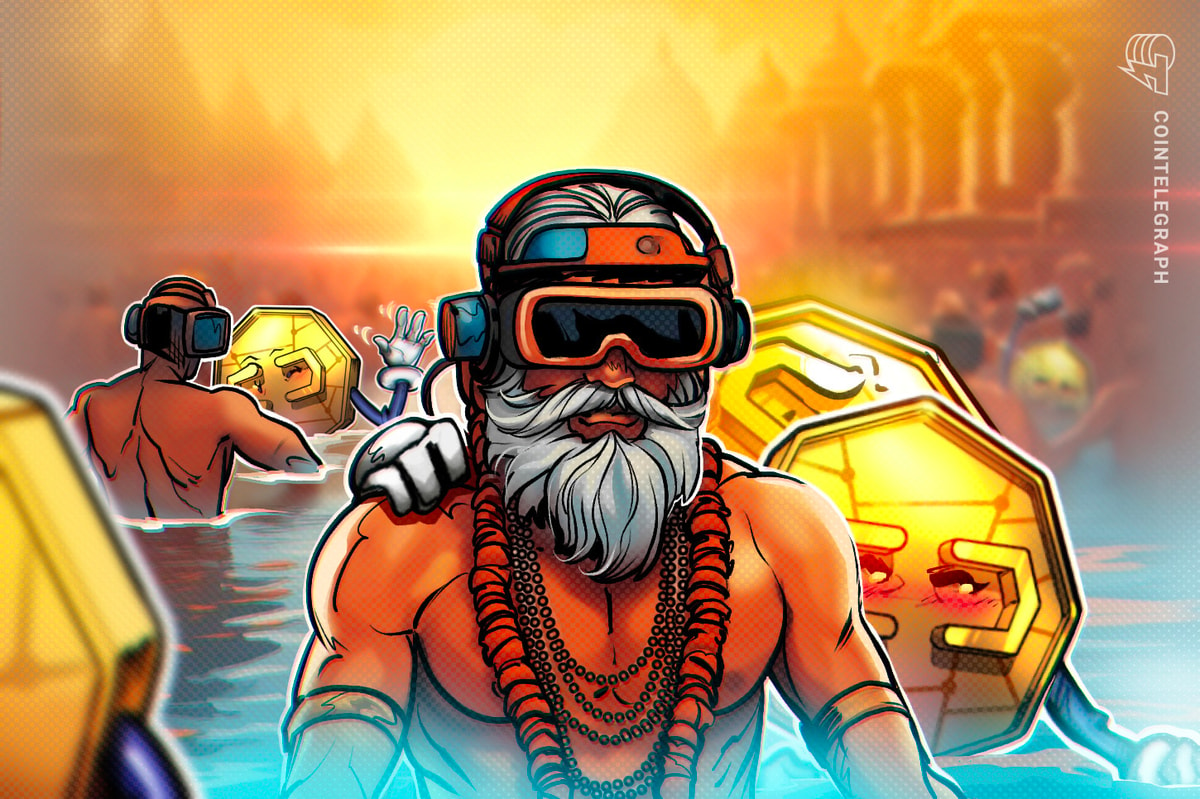India’s MahaKumbh: A Blend of Tradition and Technology
Recently, India wrapped up the MahaKumbh, a significant Hindu gathering that takes place once every 144 years. The event showcased unusual occurrences, such as a man immersing himself in the sacred waters at Sangam—the confluence of the Ganga, Yamuna, and Sarasvati rivers—while offering “Digital Snan” with passport-sized photos, symbolizing virtual holy baths. A sprawling nine-acre camp provided visitors with insights into ancient Hindu practices, and many families participated in a 360-degree live virtual tour of the MahaKumbh, receiving packaged pure Sangam water delivered to their homes. These unprecedented occurrences prompt an intriguing question: Can the intersection of technology and tradition provide insights into India’s future in the metaverse? Absolutely.
Embracing Technology with a Unique Perspective
India has historically taken a distinctive approach to technology adoption, often bypassing conventional stages. For instance, the nation transitioned directly to mobile-first experiences without a significant landline infrastructure. As immersive technologies become more prevalent, India is showcasing its unique patterns of adoption. In recent years, the digitization of religious practices has surged, exemplified by the VR Devotee app, which was introduced in 2016 to stream rituals and festivals from over 150 temples, enabling virtual participation for devotees. During the COVID-19 pandemic, the app experienced an impressive 40% increase in user engagement. The Indian government has also acknowledged this trend, launching “Temple 360” in 2022, a platform offering virtual darshan from major pilgrimage sites. The famous Puri Jagannath Rath Yatra, held without public attendance in 2020, attracted millions of online viewers, a trend seen across various Indian pilgrimages.
Significance of MahaKumbh in the Digital Era
The MahaKumbh, celebrated by over 663 million pilgrims, has embraced immersive technologies in a way that reflects a cultural readiness to integrate digital experiences into deep-rooted spiritual traditions. This indicates a significant shift in how sacred events can be experienced in the modern era.
From Doubt to Cutting-Edge Technology
Under the Digital India initiative, augmented reality (AR) and virtual reality (VR) are explicitly recognized as key emerging technologies, alongside artificial intelligence (AI), blockchain, and 5G. The government has taken actionable steps to support this vision by creating Centers of Excellence, such as VARCoE at the Indian Institute of Technology Bhubaneswar, and launching programs like IMAGE to nurture startups in extended reality (XR). In 2022, the MeitY Startup Hub collaborated with Meta to initiate the XR Startup Program, providing grants of 20 lakh Indian rupees (approximately $23,000) to 16 startups.
Corporate Leaders Pioneering the Immersive Landscape
The corporate sector’s response to the metaverse signals India’s readiness for this digital frontier. Reliance, led by Mukesh Ambani, has taken significant steps forward, including a partnership between Jio Platforms and Polygon Labs to integrate Web3 and blockchain features into its extensive digital ecosystem. This collaboration is particularly impactful, as it has the potential to introduce Web3 capabilities to Jio’s vast user base of over 482 million. Jio’s commitment to immersive technologies is further highlighted by the launch of “Jio Glass,” an affordable mixed-reality device tailored to the Indian market. The acquisition of Tesseract and ongoing discussions with Meta further emphasize Reliance’s strategic investment in the metaverse. This year, alongside the Polygon partnership, Jio introduced JioCoin, a notable move for the Indian Web3 community. Additionally, the Indian Railway Catering and Tourism Corporation has begun issuing non-fungible token (NFT) train tickets on the Polygon blockchain for passengers attending the MahaKumbh, leveraging Polygon’s advantages of quick processing and low transaction fees, which reflects a growing maturity in India’s blockchain landscape.
Controversies and the Challenge of Mainstream Adoption
Despite the advancements, not everyone views the digitization of sacred experiences as a positive development. The introduction of the “Digital Snan” service, priced at 1,100 rupees in Sangam, sparked considerable backlash on social media, with critics arguing that it commodifies spirituality and reduces sacred practices to mere transactions. Furthermore, it has been over eight years since Pokémon Go showcased the potential of augmented reality to create widespread cultural phenomena, and since then, no comparable event has emerged. This absence of a groundbreaking moment raises concerns about whether immersive technologies will ever reach the same level of ubiquity as smartphones. While VR arcades attract youthful visitors for occasional experiences, consistent engagement patterns have yet to emerge outside specific professional settings.
Emerging Trends in India’s Metaverse
What sets India’s potential metaverse apart from Western counterparts is its foundation in culturally significant contexts that resonate deeply with millions. While Silicon Valley often envisions virtual workplaces and speculative digital assets, India’s initial applications prioritize democratizing access to culturally meaningful experiences. This culturally anchored approach may prove more sustainable by addressing genuine human needs such as connection to heritage, participation in community rituals, and access to otherwise unattainable experiences due to distance or disabilities. Consequently, India’s initiatives in the metaverse might finally uncover the essential “why” that has hindered mainstream adoption in other regions.
This article serves as a general overview and should not be construed as legal or investment advice. The opinions expressed are solely those of the author and do not necessarily reflect the views of any organization.

